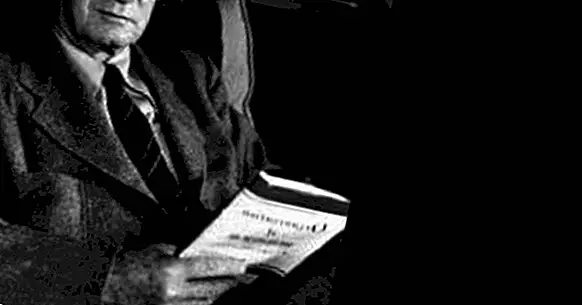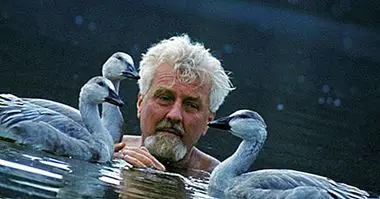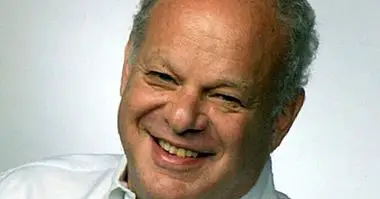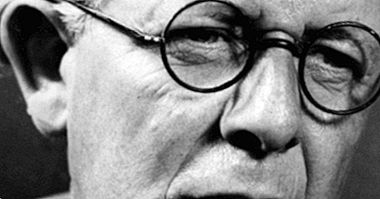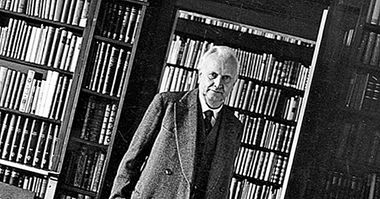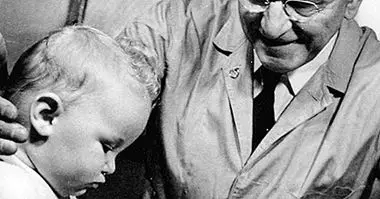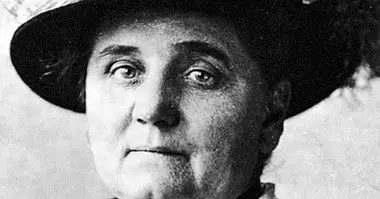Edwin Ray Guthrie: biography of a pioneer in behavioral psychology
Edwin Ray Guthrie (1886 - 1945) was an American mathematician, philosopher and psychologist who developed important theories for the behavioral tradition of the twentieth century. Among other things, Guthrie's proposals impacted learning theories and interventions for habit modification.
Next we will see a biography of Edwin Ray Guthrie and some of his main contributions to behaviorism.
Edwin Ray Guthrie: biography of the American behaviorist
Edwin Ray Guthrie was born on January 9, 1886 in the city of Lincoln, Nebraska. He was the son of a teacher and a business manager, as well as one of five brothers. He specialized in mathematics and later in philosophy and psychology at the University of Nebraska.
In 1912 he obtained a PhD in symbolic logic at the University of Pennsylvania , and two years later he joined the University of Washington, where he developed much of his professional career as a psychologist, until the year 1956, which was when he retired permanently.
By the 1930s, Ray Guthrie was already one of the most recognized psychologists in the United States. He had trained under the tutelage of the neuropsychologist Stevenson Smith, from whom he had learned comparative research methods applied in psychology, as well as the functionalism of the American tradition.
In the same way, he was trained in the most representative theories of clinical practice at the time. In fact, in the same decade he translated along with his wife, Helen M. Guthrie, important works for psychotherapy, such as the book Principles of Psychotherapy of the French psychiatrist Pierre Janet, whom they met during a trip to France.
His approach was behavioral and, since his previous training had been in exact sciences, Guthrie was convinced that it was possible to develop an objective scientific method to study the mind and intervene in behavior. Likewise, due to his training in philosophy, much of his theoretical development was argued by principles of this last discipline. Among other things, he developed a principle of association, through which he saw the possibility of linking his theory of learning with contemporary research.
In the same vein, he developed a system for evaluating teaching in university faculties, which made it possible for the evaluations to be more accessible for teachers and students, but also for administrative personnel responsible for salary adjustments, promotions and hiring.
In the year of 1945, Ray Guthrie was named president of the American Psychological Association, and in 1958 he obtained the Gold Medal of the American Foundation of Psychology in the United States. Edwin ray guthrie died on April 23, 1959 in Seattle Washington because of a cardiac arrest.
The principle of association of Ray Guthrie
The theory of the association of Guthrie is based on the idea that it is the contiguity that makes learning possible . That is, we learn thanks to the closeness between two elements, which in this case are the stimulus and the response. But, unlike classical operant behaviorism, for Guthrie the behaviors are not so much responses but movements. The latter are the largest response units and those that need to be analyzed if we want to modify behaviors.
The contiguity is established when the set of elements that characterize a stimulus is accompanied by a movement. Guthrie observed that, in front of similar elements, the sequence of movement occurred again, which finally generates a pattern or chain of discrete movements caused by signals of stimuli, which is what he defined as "learning".
Contributions and differences with operant conditioning
For the behavioral psychology that had been developing so far, one of the indispensable conditions to generate a learning, is the presence of a reinforcer, either positive or negative . This reinforcer makes it possible for a response to be associated with any stimulus. Furthermore, for this association to establish itself as a behavior pattern it had to be repeated several times.
What Guthrie argued is that this was not necessarily the case. For him, the association could be made through the incidental (non-repetitive) interaction between a stimulus and the response. Put another way, for Guthrie, a pattern of behavior can be fixed from a single trial.
But this did not mean that people acquire complex behaviors when performing them only once. What it suggests is that from the first time there is contact between a stimulus and a response, we exercise a series of body movements that are associated.These are repeated before similar events and later transformed into complex behaviors.
On the modification of habits
Edwin Ray Guthrie argued that the main thing was not the reinforcer, in fact, learning did not necessarily have to be achieved by rewarding behaviors. In the same way, the key to modify behaviors, and specifically habits, is to generate new associations .
It would try to detect the primary signals (those that were associated from the first interaction between the stimulus and the response), and put into practice different behavioral acts, that is, other responses.
Bibliographic references:
- Clarck, D. (2005). From Philosopher to Psychologist: The Early Career of Edwin Ray Guthrie, J.R History Psychology, 8 (3): 235-254.
- Edwin Ray Guthrie (2018). New World Encyclopedia. Retrieved September 21, 2018. Available at //www.newworldencyclopedia.org/entry/Edwin_Ray_Guthrie
- Edwin Ray Guthrie (2018). Encyclopaedia Britannica. Retrieved September 21, 2018. Available at //www.britannica.com/biography/Edwin-Ray-Guthrie

